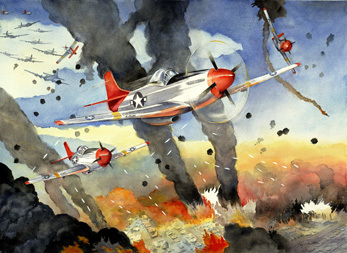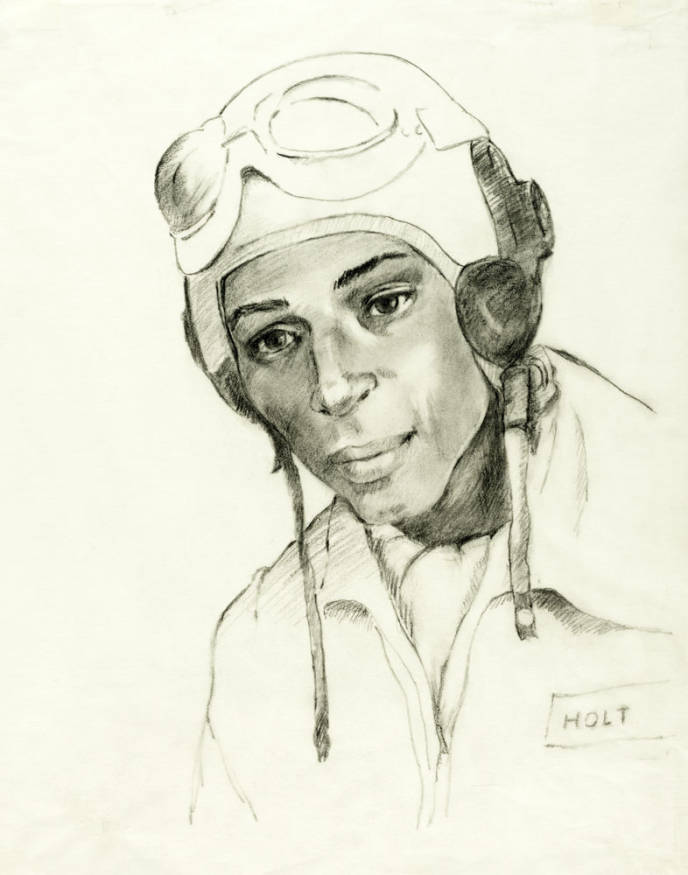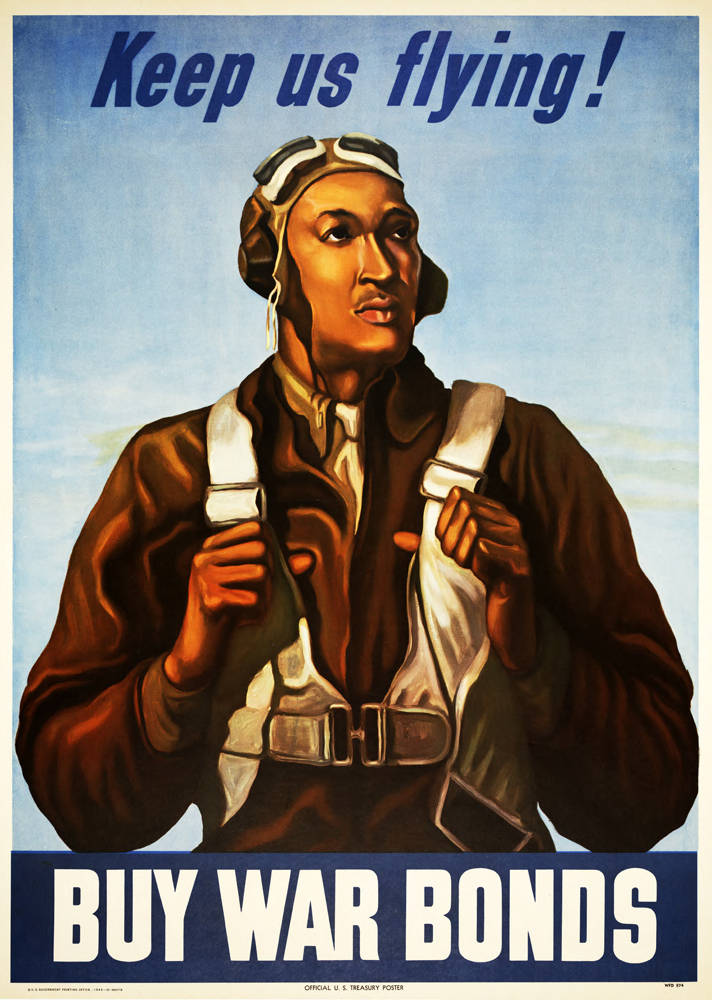Tuskegee Airmen
The Tuskegee Airmen were a group of African American Fighter Pilots that served mostly in the European theatre of World War II in segregated units. These pilots were trained in Tuskegee, Alabama, and surrounding army airfields. Once they were trained, they were assigned to units within the 332nd Fighter Group and the 447th Medium Bombardment Group. They were the first African American aviators to fly on behalf of the United States Armed Forces.
Origin of the Tuskegee Airmen
Before the inception of the Tuskegee Airmen, there were no African American pilots within the U.S. Military. Thanks to decades of advocacy led by civil rights leaders, Congress appropriated funds to train African American pilots in civilian flight schools in 1939. By 1941, the 99th Pursuit Squadron was formed which would become the first flying unit in the U.S. Military made up entirely of African American pilots.
In June of 1941, the 99th Pursuit Squadron was transferred to Tuskegee, Alabama where the airmen trained on Griel Field, Kennedy Field, Moton Field, Shorter Field, and the Tuskegee Army Airfields. The Tuskegee Airfields became the only army installation teaching the three phases of pilot training – basic, advanced, and transition.
Tuskegee Airmen in Combat
 The 99th Pursuit Squadron was finally considered ready for combat by April 1943. Their first mission was to attack the strategic island of Pantelleria to prepare for the Allied invasion of Sicily in July of 1943. By the end of 1944, the 332nd fighter group was stationed overseas with three fighter squadrons made up of Tuskegee Airmen.
The 99th Pursuit Squadron was finally considered ready for combat by April 1943. Their first mission was to attack the strategic island of Pantelleria to prepare for the Allied invasion of Sicily in July of 1943. By the end of 1944, the 332nd fighter group was stationed overseas with three fighter squadrons made up of Tuskegee Airmen.
In addition to the fighter squadrons, the 447th Medium Bombardment group was activated by January of 1944. In total, there were 992 pilots trained in Tuskegee from 1941 to 1946, they flew 1578 combat missions, and 179 bomber escort missions. The group received three Distinguished Unit Citations, 96 Distinguished Flying Crosses, and 744 Air Medals.
Legacy of the Tuskegee Airmen
As the first African American Aviators in the U.S. Military, the Tuskegee Airmen leave a lasting legacy in the armed forces. After segregation in the military was ended in 1948 through Executive Order 9981, the Tuskegee Airmen became in very high demand in the newly created United States Air Force. In 2007, the Tuskegee Airmen were collectively awarded a Congressional Gold Medal, which is currently on display at the Smithsonian Institution. Here at the Pritzker Military Museum & Library, our Oral History Program is named after Coleman T. Holt, a Tuskegee Airman.
To learn more about the Tuskegee Airmen, check out American Ace by Marilyn Nelson, and Half American by Matthew F. Delmont, both available as E-books from our Library.
Also, check out our gift shop where you can purchase a mug or puzzle based of Kay’s Smith’s watercolor of the Tuskegee Airmen in flight, Red Tails Escorting the B17s.
Still looking for more? Check out these videos:
Tuskegee Airmen - World War II all-African American flight unit
Citizen Soldier: The Tuskegee Airmen of World War II
2022 Liberty Gala - Enoch "Woody" Woodhouse remarks
There’s more at the Pritzker Military Museum & Library this week!
 Looking to build a bridge or learn how they are made? You are invited to attend a special Family Program, Truss Exercise: Bridge Engineering in the Military and Beyond on July 8that 11 AM. Join us for amazement and fun for the whole family.
Looking to build a bridge or learn how they are made? You are invited to attend a special Family Program, Truss Exercise: Bridge Engineering in the Military and Beyond on July 8that 11 AM. Join us for amazement and fun for the whole family.
Print books on the Tuskegee Airmen:
Davis, Benjamin O. Benjamin O. Davis, Jr., American: An Autobiography. Washington: Smithsonian Institution Press, 1991.
Haulman, Daniel L. Tuskegee Airmen: Chronology. Montgomery, Alabama: Air Force Historical Research Agency, 2010.
Haulman, Daniel L, and Charles E McGee. The Tuskegee Airmen Chronology: A Detailed Timeline of the Red Tails and Other Black Pilots of World War II. Montgomery, AL: New South Books, 2017.
Tucker, Phillip Thomas. Father of the Tuskegee Airmen, John C. Robinson. 1st ed. Washington, D.C.: Potomac Books, 2012.
